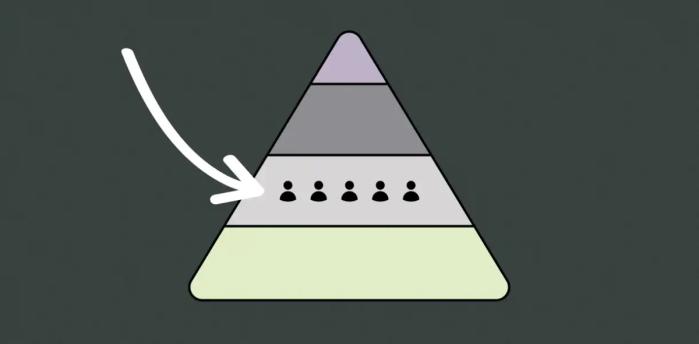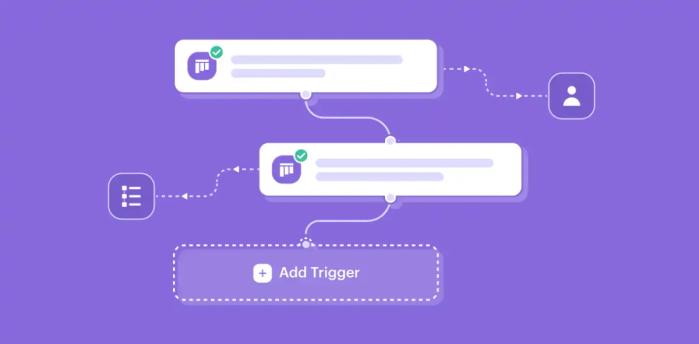Sales and marketing are ever-evolving fields, and understanding customer behavior can help you navigate them. But as customers are spending more time online, their behavior has changed dramatically compared to just a few years ago.
Behavioral segmentation has emerged as a powerful tool for businesses to gain insights into their customers’ preferences and actions.
With knowledge gained from these insights, companies can customize their marketing efforts, increase customer satisfaction, and ultimately drive sales.
But what exactly is behavioral segmentation, and how can you use it to power up your marketing strategy?
Let’s define what this term is and then show you how it works, in practical terms.
What is behavioral segmentation?
Behavioral segmentation in marketing is the process of sorting consumers into groups according to how they interact with a company. This is referred to as their interaction patterns

The main goal is to classify customers according to their behavior and preferences. As a result, businesses can personalize marketing strategies and improve sales for each of the different audiences.
Some approaches to segmenting customers behaviorally include:
- Analyzing their product usage histories
- Examining their occasional purchases
- Assessing their brand loyalty
- Identifying their preferred product benefits
If you want to stay competitive in rapidly evolving markets, it’s crucial to understand customer behavior.
Previous interactions are an excellent way to predict behavior in the future. It can be used to make informed assumptions about what lies ahead. Businesses can get valuable insights into their target audiences.
From there, they create personalized marketing campaigns to meet their needs by examining different factors. These include common product purchases, shared hobbies, and similar beliefs.
Benefits of behavioral segmentation for sales
Behavioral segmentation offers a wide range of benefits for sales teams. Some of them are:
- Better resource management
- Creating custom marketing strategies
- Increased customer lifetime value
- Lowered customer acquisition costs
In essence, behavioral segmentation allows businesses to gain a competitive edge by offering personalized experiences that resonate with their customers and drive sales.
Improved customer engagement
Understanding the customer behavior is key to improving their engagement with the company. That’s because businesses can create more personalized marketing efforts with the information they have readily available.
Providing relevant and timely content to customers at various stages of their customer journeys can lead to improved customer involvement and more sales. For example, companies like Netflix and Spotify use behavioral segmentation to maintain subscriber engagement.
The way they do this is simple: they give you custom suggestions based on your previously consumed content.
You too can foster increased engagement and loyalty by catering to the specific needs and preferences of your customers.
Targeted marketing campaigns
Analyzing customer behavior enables businesses to adapt their marketing messages for specific segments, which leads to more effective marketing campaigns. For instance, companies can use purchasing behavior segmentation to target customers more effectively by:
- Customizing marketing efforts and using different marketing messages based on what customers purchased
- Providing informative material to research-focused customers
- Notifying customers of upcoming sales
Improved customer retention
Customer loyalty is a vital element of behavioral segmentation, as it enables businesses to:
- Recognize loyal customers and reward them
- Create tailored experiences to sustain their loyalty
- Benefit from customers who spend more over the long term
- Receive word-of-mouth referrals and valuable feedback
In short, it’s an easy way to get more money out of your existing customers.
Increased sales revenue
A better understanding of customer behavior and preferences can lead to better marketing strategies and more sales revenue.
With marketing segmentation, you can focus on the customers that matter. This targeted approach can lead to better conversion rates and more revenue.
Optimized product development

Using behavioral data can help businesses in the following ways:
- Identifying customer desires and preferences
- Better alignment with those needs and wants
- Spotting opportunities for product innovation and improvement
- Offering the possibility of customization
In short, you can get familiar with what your customers want and create more of it. That way, your customers are happier and spend more money.
Types of behavioral segmentation
There are several types of behavioral segmentation, each with its pros and cons. Here are the main ones you need to know about.
Purchase behavior
Purchase behavior means categorizing customers according to their purchasing habits.
Businesses can gain valuable insights into customers’ preferences and behaviors by scrutinizing their past transactions and buying patterns. You can create more targeted campaigns based on what the customers have previously bought.
For instance, a business notices that a particular customer segment frequently purchases environmentally friendly products. They can then create marketing campaigns promoting their “green” offerings in order to appeal to this group.
As a result, you get more sales, simply by tapping into the information you already have.
User engagement
User engagement segmentation focuses on how customers interact with a brand or product. Tracking user activity and engagement enables businesses to devise personalized marketing campaigns that cater to the distinct preferences of each customer segment. This can lead to increased customer engagement, loyalty, and, ultimately, sales.
For example, businesses can offer personalized product recommendations or content based on a customer’s browsing history or previous interactions with the brand.
Customer loyalty
Customer loyalty segmentation identifies repeat or long-term customers and provides them with personalized experiences in order to foster and maintain their loyalty.
Loyal customers are responsible for the majority of revenue and require less expenditure to retain than obtaining new customers does. Those loyal clients also possess the highest lifetime value.
Implementing customer loyalty programs is an effective strategy for gaining loyal customers. These programs reward and incentivize loyalty, encouraging repeat purchases and helping to solidify the relationship between the customer and the brand.
Occasion or timing
Occasion or timing segmentation means targeting customers based on specific events or times when they are likely to complete a purchase. This type of segmentation can be particularly useful for businesses that experience seasonal fluctuations in demand. As well as those that offer products or services tied to specific events or occasions.
Benefits sought
Benefits sought segmentation groups customers based on the value propositions they need from a product or service.
For example, a fitness equipment retailer could segment their customers based on those seeking weight loss, muscle gain, or general health and wellness, and tailor their marketing efforts accordingly.
11 best behavioral segmentation strategies
To effectively understand and target your customers, consider implementing these 11 best behavioral segmentation strategies:
Purchase history analysis
Examining customers’ purchase histories can give invaluable insights into customers’ buying habits and preferences.

For example, Amazon leverages past behavior and purchase history of segments with similar behaviors. They can then recommend other products, in total this accounts for 35% of their sales. Understanding your customers’ purchase history can lead to more effective marketing campaigns and increased customer satisfaction.
Customer loyalty programs
Customer loyalty programs reward and incentivize loyal customers, encouraging repeat purchases and building long-term relationships between the customer and the brand. Businesses can strengthen these relationships with their most valuable customers and drive repeat business by offering them exclusive perks, discounts, or rewards.
Cart abandonment tracking
Cart abandonment tracking is an essential tool for businesses looking to identify potential lost sales and improve their checkout process.
Tracking occasions of customers adding items to their online shopping carts without completing a purchase lets businesses get insights into the reasons for abandonment. They can then implement the necessary changes to their checkout process in order to improve conversion rates.
User activity monitoring
Tracking activities like website visits, page views, and time spent on site enables businesses to better comprehend how customers interact with their brand or product.
The knowledge gained from analyzing customer data can be used to create personalized marketing campaigns that cater to the unique preferences of each customer segment.
Seasonal trend identification
Seasonal trend identification can help businesses target customers during specific times or events, such as holidays or seasonal changes.
Content engagement metrics
Measuring content engagement can provide businesses with insights into how customers interact with their marketing materials and identify areas for improvement.

Tracking metrics like click-through rates, open rates, and time spent on the page allows businesses to refine their marketing materials to better resonate with their target audience.
Email open and click-through rates
Understanding email open and click-through rates is essential for evaluating the effectiveness of email marketing campaigns. Monitoring these metrics enables businesses to gain insights into their email performance and make data-driven decisions to enhance their campaigns.
Social media interactions
Monitoring social media interactions can provide valuable insights into customer preferences and behavior. Tracking activities like likes, comments, and shares helps businesses better understand the content types that resonate with their audience, enabling them to customize their marketing efforts accordingly.
Customer feedback surveys
Customer feedback surveys are a valuable tool for businesses looking to identify areas for improvement and better understand customer needs. Collecting customer feedback provides businesses with insights into potential shortcomings in their products or services, allowing them to implement necessary changes to meet customer expectations.
A/B testing for campaign optimization
A/B testing is a valuable tool for businesses looking to test different marketing strategies and identify the most effective approach.
Comparing two versions of a web page, app, or marketing campaign, for example, allows businesses to spot which version performs better and adjust their marketing efforts accordingly.
Event-triggered messaging
Event-triggered messaging is an effective strategy for sending personalized messages to customers based on specific actions or events, such as cart abandonment or browsing history.
Example of event-triggered messaging on Hubspot
Sending timely and relevant messages tailored to the customer’s behavior or product engagement can enhance customer engagement, and loyalty, and ultimately, boost sales.
Leveraging these marketing strategies enables businesses to:
- Gain valuable insights into their customers’ behavior and preferences
- Create more effective marketing campaigns
- Heighten customer satisfaction
- Ultimately increase sales
How Capsule CRM can help you with behavioral segmentation
Behavioral segmentation is a crucial aspect of modern marketing, allowing businesses to categorize their audience based on specific behaviors and preferences.
Capsule CRM offers a range of features that facilitate this segmentation, making it easier for companies to target their marketing efforts effectively. Here's how Capsule CRM can be a game-changer in your behavioral segmentation strategy.
Contact management
Capsule CRM's Contact Management feature centralizes all customer data, making it easier to analyze behaviors for segmentation.
By having all customer interactions and preferences in one place, you can create more targeted marketing campaigns. This feature allows you to easily track conversations, delve into customer histories, and deliver more personalized experiences.
Sales pipeline
The Sales Pipeline feature allows you to tailor your sales process to match customer behaviors. This ensures that you're targeting the right audience segments at the right stages of their buying journey.
Customizing the sales pipeline allows you to identify which deals need attention and which are about to close, increasing the efficiency of your sales efforts.
Sales analytics

Capsule CRM's Sales Analytics provides insightful reports that help you evaluate the impact of behavioral segmentation on your sales figures. These analytics make it easier to spot trends and patterns, thus facilitating data-driven decision-making. You can easily identify which activities have the most impact on your sales, helping you allocate resources more effectively.
Workflow automation
The platform's Workflow Automation feature allows you to automate targeted marketing campaigns based on behavioral triggers.
Whether it's a recent purchase, cart abandonment, or specific website activity, automation ensures that your marketing efforts are both timely and relevant. This not only saves time but also makes your campaigns more effective.
Integrations
Capsule CRM offers seamless integrations with popular applications like Microsoft 365, Google Workspace, and Mailchimp. These integrations enable you to pull in data from various sources, enhancing your behavioral segmentation capabilities.
Combining data from different platforms like these gives you a more comprehensive view of your customer behaviors, making your segmentation strategies more robust.
Key takeaways
- Behavioral segmentation is a marketing technique that groups customers according to their interactions with a company.
- The benefits of behavioral segmentation include enhanced customer engagement, targeted marketing campaigns, improved customer retention, and increased sales revenue.
- The 11 best strategies for leveraging behavioral segmentation include purchase history analysis, loyalty programs, and cart abandonment tracking.
Summary
Behavioral segmentation based on an understanding of customer behavior and preferences is a crucial component of any successful marketing strategy. It allows businesses to create tailored marketing campaigns, increase customer satisfaction, and drive sales.
Implementing the 11 best behavioral segmentation strategies can provide a competitive edge in today’s fast-paced market and ensure long-term success.
So why not start implementing these strategies in your marketing efforts today with the help of Capsule’s CRM. Sign up for our 14 day free trial and watch your business thrive.




